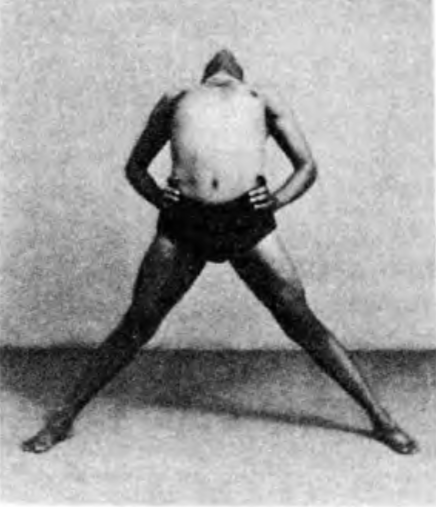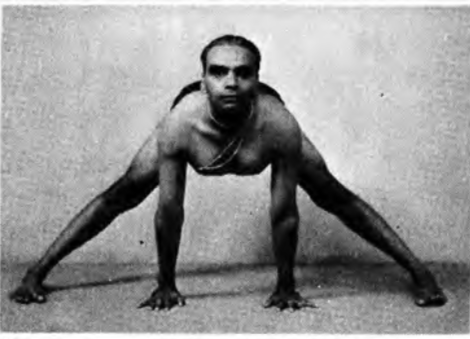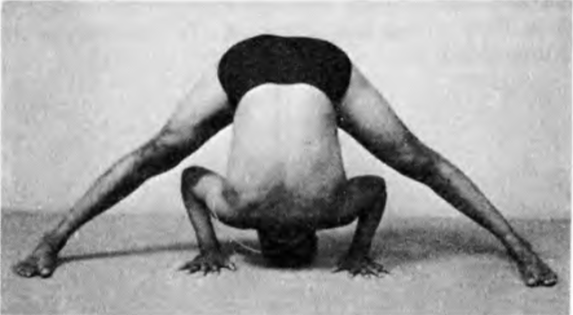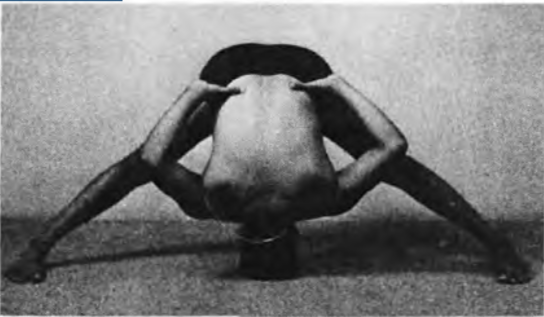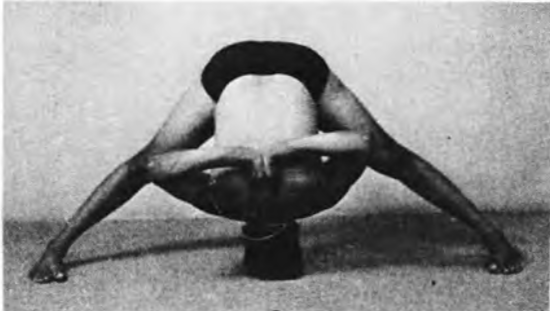Search your article
Prasarita Padottanasana
Prasarita Padottcmasana – 4
Prasarita means expanded, spread, extended. Pada means a foot. The pose is one where the expanded legs are stretched intensely.
Technique
1 . Stand in Tadasana.
2. Inhale, place the hands on the waist and spread the legs apart 4 to 5 feet.
4. Inhale and raise the head up, keeping the back concave.
5· Exhale, bend the elbows and rest the crown of the head on the floor, keeping the weight of the body on the legs.
Note! Do not put the body weight on the head. Both feet both palms and the head should be in the straight line.
6. Stay in the pose for half a minute, breathing deeply and evenly.
7. Inhale, raise the head from the floor and straighten the arms at the elbows. Keep the head well up by making the back concave as in position 4·
8. Exhale and stand as in position 2.
9· Jump back to Tadasana.
Prasarita Padottanasana II
Effects
In this pose the hamstring and abductor muscles are fully developed, while blood is made to flow to the trunk and the head. People who cannot do Siraasana can benefit from this pose, which in creases digestive powers.
All the standing poses described above are necessary for beginners. As the pupil advances he attains better flexibility and then the stand ing poses can be dispensed with, though it is advisable to do them once a week. All these standing poses help to reduce the body weight.
